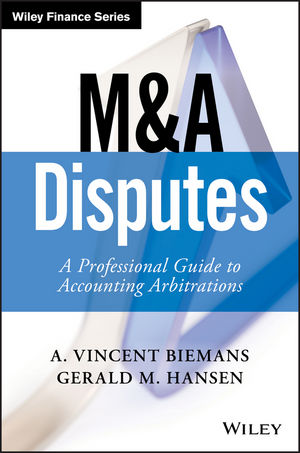
books-complementary Valuation for M&A: Building Value in Private Companies
- books-complementary, elibrary
Valuation for M&A: Building Value in Private Companies
SHARE:

Available in our e-library on M&A at IMAA!
Authors: Chris M. Mellen, Frank C. Evans
Publisher: John Wiley
Year: 2010, June
ISBN: 978-0-470-60441-0
Content
Discover the tools necessary to determine what your company’s value is, what drives its value, and how to enhance that value during an M&A transaction.
The only book to focus on valuation specifically for mergers and acquisitions, Valuation For M&A: Building Value in Private Companies, Second Edition lays out the steps for measuring and managing value creation in privately held businesses. This groundbreaking work led directly to authors Chris M. Mellen and Franck C. Evans being named the joint 2010 AM&AA Middle Market Thought Leader of the Year by the Alliance of Merger & Acquisition Advisors, and its thorough overview of the subject:
- Recognizes a company as an investment and explains how to manage that value to maximize shareholder returns, focusing on returns, risks, and capital invested
- Explains investment or strategic value versus fair market value and provides a document request checklist; sample interview questions; and formats for adjusting financial statements, developing discount rates, the computation of net cash flow; and a valuation reconciliation form
- Includes a comprehensive case study to illustrate concepts and calculations
- Now covers fair value accounting and the impact of SFAS Nos. 141, 142, and 157 and their IFRS counterparts, intangible asset valuation techniques, exit planning, international M&As, and venture backed/early stage companies
Showing corporate executives as well as M&A professionals and business appraisers how to value privately-held businesses for merger and acquisition purposes, this book helps investors, executives, and their advisors determine the optimum strategy to enhance both market value and strategic value to maximize return on investment.
Table of Contents
Preface xi
Dedication and Acknowledgments xv
CHAPTER 1 Winning through Merger and Acquisition 1
Critical Values Shareholders Overlook 2
Stand-alone Fair Market Value 4
Investment Value to Strategic Buyers 5
“Win-Win” Benefits of Merger and Acquisition 7
CHAPTER 2 Building Value and Measuring Return on Investment in a Private Company 13
Public Company Value Creation Model 13
Computing Private Company Value Creation and ROI 15
Analyzing Value Creation Strategies 30
CHAPTER 3 Competitive Analysis 37
Linking Strategic Planning to Building Value 39
Assessing Specific-Company Risk 40
Competitive Factors Frequently Encountered in Nonpublic Entities 45
Financial Analysis 46
Conclusion 51
CHAPTER 4 Merger and Acquisition Market and Planning Process 53
Common Seller and Buyer Motivations 55
Why Mergers and Acquisitions Fail 57
Sales Strategy and Process 58
Acquisition Strategy and Process 66
Due Diligence Preparation 77
CHAPTER 5 Measuring Synergies 81
Synergy Measurement Process 82
Key Variables in Assessing Synergies 85
Synergy and Advance Planning 86
CHAPTER 6 Exit Planning 89
Why Is Exit Planning So Difficult? 90
What Makes Planning for Your Private Company Investment Unique? 93
Why Should Exit Planning for Your Private Company Begin Now? 95
Exit Planning Process 96
Step 1: Setting Exit Goals 98
Step 2: Owner Readiness 99
Step 3: Type of Exiting Owner 100
Step 4: Exit Options 101
Step 5: Range of Values 105
Step 6: Execution of Exit Plan 107
CHAPTER 7 Valuation Approaches and Fundamentals 109
Business Valuation Approaches 109
Using the Invested Capital Model to Define the Investment Being Appraised 111
Why Net Cash Flow Measures Value Most Accurately 112
Frequent Need to Negotiate from Earnings Measures 114
Financial Statement Adjustments 117
Managing Investment Risk in Merger and Acquisition 120
Conclusion 125
CHAPTER 8 Income Approach: Using Rates and Returns to Establish Value 127
Why Values for Merger and Acquisition Should Be Driven by the Income Approach 127
Two Methods within the Income Approach 129
Three-Stage DCF Model 134
Establishing Defendable Long-term Growth Rates and Terminal Values 135
CHAPTER 9 Cost of Capital Essentials for Accurate Valuations 141
Cost of Debt Capital 142
Cost of Preferred Stock 143
Cost of Common Stock 144
Fundamentals and Limitations of the Capital Asset Pricing Model 145
Modified Capital Asset Pricing Model 148
Build-up Model 149
Summary of Ibbotson Rate of Return Data 155
Private Cost of Capital 156
International Cost of Capital 158
How to Develop an Equity Cost for a Target Company 158
CHAPTER 10 Weighted Average Cost of Capital 163
Iterative Weighted Average Cost of Capital Process 164
Shortcut Weighted Average Cost of Capital Formula 168
Common Errors in Computing Cost of Capital 170
CHAPTER 11 Market Approach: Using Guideline Companies and Strategic Transactions 173
Merger and Acquisition Transactional Data Method 174
Guideline Public Company Method 178
Selection of Valuation Multiples 181
Market Multiples Commonly Used 183
CHAPTER 12 Asset Approach 189
Book Value versus Market Value 190
Premises of Value 191
Use of the Asset Approach to Value Lack-of-Control Interests 191
Adjusted Book Value Method 192
Treatment of Nonoperating Assets or Asset Surpluses or Shortages 197
Specific Steps in Computing Adjusted Book Value 197
CHAPTER 13 Adjusting Value through Premiums and Discounts 199
Applicability of Premiums and Discounts 200
Application and Derivation of Premiums and Discounts 201
Apply Discretion in the Size of the Adjustment 203
Control versus Lack of Control in Income-driven Methods 204
Fair Market Value versus Investment Value 205
CHAPTER 14 Reconciling Initial Value Estimates and Determining Value Conclusion 207
Essential Need for Broad Perspective 207
Income Approach Review 210
Market Approach Review 215
Asset Approach Review 216
Value Reconciliation and Conclusion 218
Checks to Value 220
Candidly Assess Valuation Capabilities 221
CHAPTER 15 Art of the Deal 223
Unique Negotiation Challenges 223
Deal Structure: Stock versus Assets 225
Terms of Sale: Cash versus Stock 231
Bridging the Gap 233
See the Deal from the Other Side 236
CHAPTER 16 M&A and Financial Reporting 239
U.S. GAAP and IFRS 240
Relevant FASB and IFRS Statements 241
Reviews by the Audit Firm 242
ASC 820: Fair Value Measurements (SFAS 157) 243
ASC 805: Business Combinations (SFAS 141(R)) 246
ASC 350: Goodwill and Other Intangible Assets (SFAS 142) 255
Incorporating ASC 805 (SFAS 141(R)) into the Due Diligence Process 257
References 260
CHAPTER 17 Intangible Asset Valuation 263
Approaches to Valuing Intangible Assets 264
Key Components to Intangible Asset Valuation 266
Intangible Asset Valuation Methods 275
Conclusion 284
CHAPTER 18 Measuring and Managing Value in High-Tech Start-ups 285
Why Appraisals of High-Tech Start-ups Are Essential 285
Key Differences in High-Tech Start-ups 287
Value Management Begins with Competitive Analysis 288
Stages of Development 290
Risk and Discount Rates 292
Start-ups and Traditional Valuation Methods 293
QED Survey of Valuation Methods Used by Venture Capitalists 298
A Probability-Weighted Scenario Method to Value Start-ups 303
Equity Allocation Methods 309
Conclusion 311
CHAPTER 19 Cross-Border M&A 313
Strategic Buy-Side Considerations 313
Due Diligence 322
Sell-Side Considerations 326
CHAPTER 20 Merger and Acquisition Valuation Case Study 329
History and Competitive Conditions 330
Potential Buyers 331
General Economic Conditions 332
Specific Industry Conditions 333
Growth 334
Computation of the Stand-alone Fair Market Value 334
Computation of Investment Value 348
Suggested Considerations to Case Conclusion 356
About the Authors 359
Index 361


Stay up to date with M&A news!
Subscribe to our newsletter


